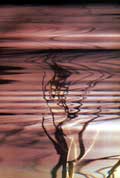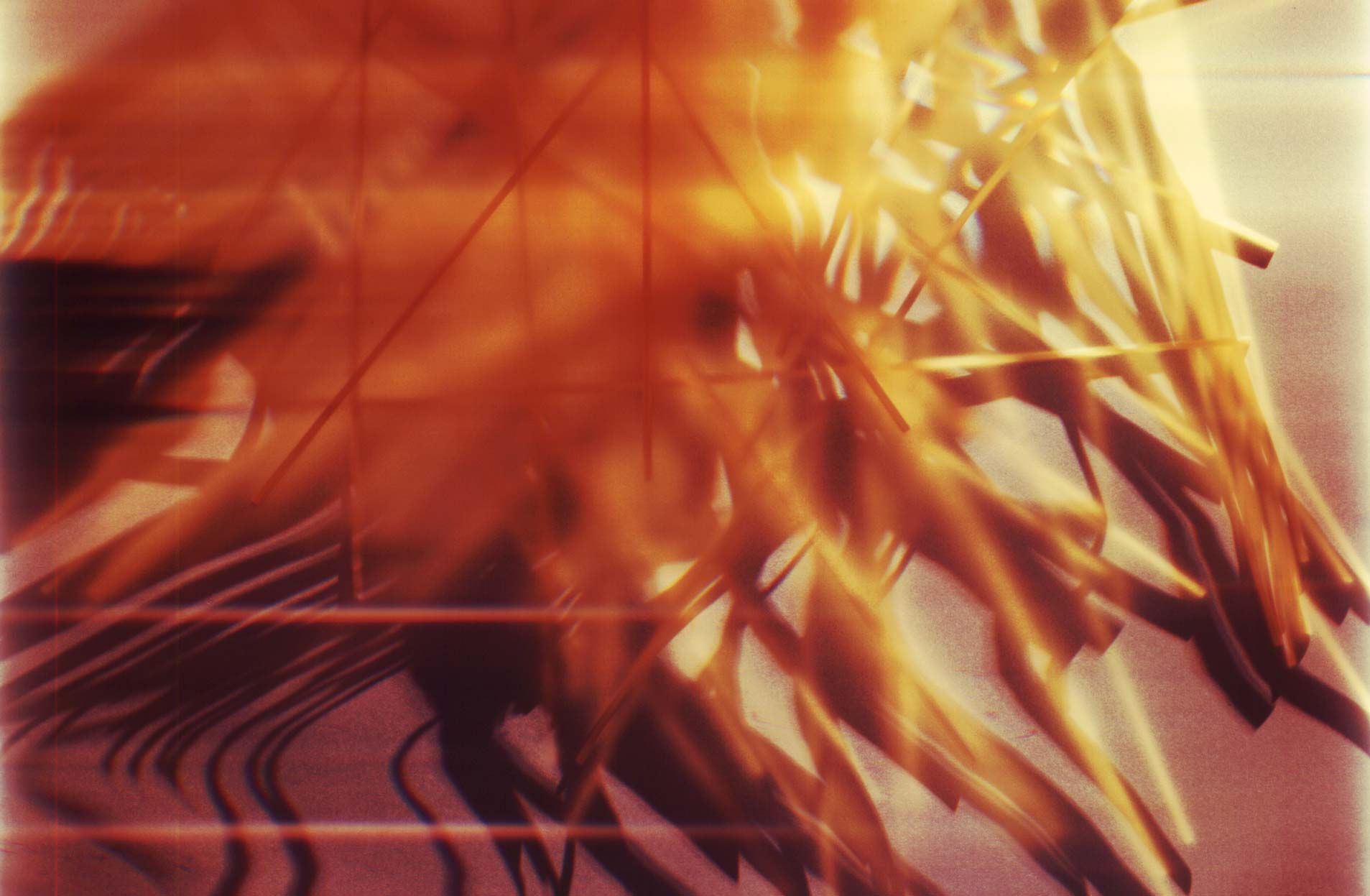
red, Lamdaprint on Ilfochrome Classic, 144x123cm, 2000, collection of Sparkasse Offenburg/Ortenau
|
Im Zyklus Raum-Zeit-Variationen zur Schattenlinie wird deutlich, wie die Zeit das Schattenbild aus den Klauen einer rein räumlichen Licht-Objekt-Konstellation entreißt. Durch den sich in der Zeit ereignenden Prozeß des Abtastens eines Scanners ist es möglich, Position, Gegenstand und Licht während des Bildentstehungsprozesses zu variieren. Das Medium reflektiert sich somit quasi selbst: Die aus dieser Bewegung resultierenden Hell-Dunkel-Ondulationen lassen den Prozeß des Abtastens sichtbar werden lassen. Mit wachsender Anzahl der Linien gewinnt das raumzeitliche Geflecht von Linien und Schatten zunehmend an Komplexität.
|
In the cycle Raum-Zeit-Variationen zur Schattenlinie (engl. space-time variations about a shadow line) reveals how time frees the shadow picture from a pure space-object constellation. By the time-based process of scanning it becomes possible to vary the object, its position and the light during the image generation. In that way the medium reflects itself: The ondulations between bright and dark make the process of scanning visible, the light situation during the calibration setting defines the final colouring. With an increasing number of lines the complexity of the spatiotemporal network of lines and shadows rises.
|
|
|
Die Scanner-Photogramme des Digitalen Souterrains betten sich ein in Tim Otto Roths kritische Medienreflektion, Objekte in Kontakt mit den elektronischen Netzhäuten unserer Zeit treten zu lassen. Ein Scanner „ertastet“ (engl. to scan) mittels einer Stablinse ein Objekt Linie für Linie. Durch einen technischen Eingriff ist es Roth gelungen, dieses photographische Element auszuschalten und an der klassischen visuellen Schnittstelle zum Computer erstmals Photogramme herzustellen. Den Betrachter nimmt er so mit auf die Reise in eine ambivalente Schattenwelt – ein digitales Souterrain.
|
The scanner photograms are part of Tim Otto Roth‘s critical media reflection bringing objects in direct contact with the electronic retinae of our time. A scanner literally scans an object line by line with the help of a prism line. Disengaging this photographical lens element by a technical intervention Tim Otto Roth managed to create photograms for the first time at the classic visual interface to the computer. In that way he takes along the spectator into an ambivalent shadow world - a souterrain digital.
|












